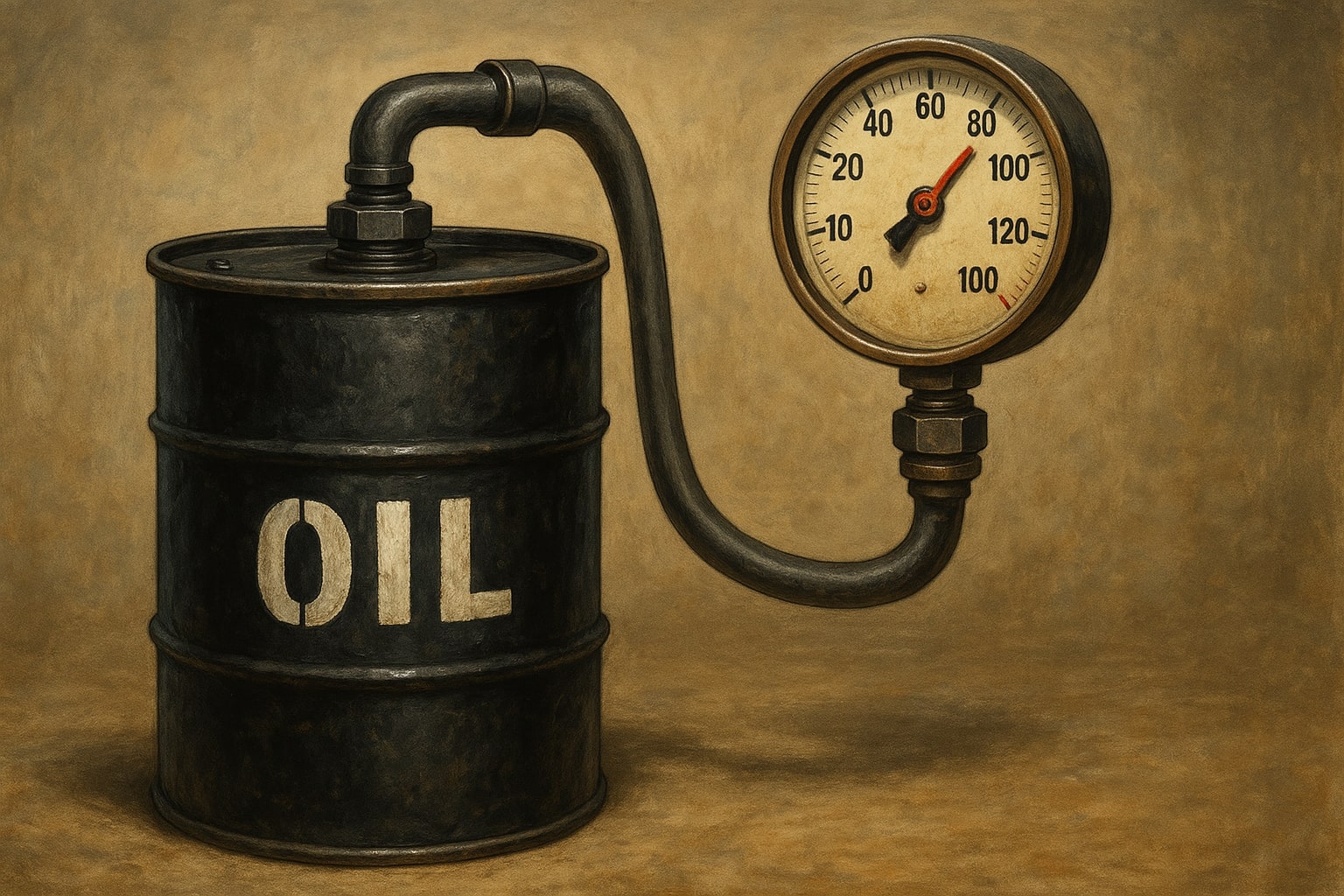Oil Price Retreat and Iran Nuclear Talks
Crude benchmarks slid into the red on Thursday as WTI (CL=F) eased 0.16% to $62.17 per barrel and Brent (BZ=F) declined 0.14% to $66.00, pressured by reports that Tehran and Washington edged closer to an interim nuclear accord. Iran’s foreign minister indicated a “better understanding” with U.S. envoys, reviving the prospect of sanctioned Iranian barrels reentering markets and adding roughly 1.2 million barrels per day if full sanctions are lifted.
Tanker Storage Surge and April Decline
Data from Vortexa revealed a 19% week-on-week increase in oil held on tankers idle for at least seven days, totaling 78.19 million barrels—the highest eight-month peak—underscoring an inventory overhang. Crude has been trending down throughout April after breaching four-year lows on April 9, with WTI off nearly 12% from its mid-March highs as concerns over global growth and energy demand intensify amid persistent tariff tensions.
Trade War Dynamics and OPEC+ Tensions
Mixed signals on U.S.-China tariffs continue to sway crude. President Trump’s pledge to “substantially” cut China duties from 145% spurred a tentative recovery, but Beijing’s insistence on full rollback keeps markets on edge. Simultaneously, OPEC+ supply discipline appears fragile ahead of a June review, with Kazakhstan openly diverging from quota cuts. If deferred compliance spreads, analysts warn of a price war that could drive benchmarks below $60.
Energy Stocks Reaction
Energy equities mirrored oil’s churn as TotalEnergies edged up 0.7% and Marathon Petroleum gained 0.98%. Shell and BP rose around 0.6%, while Chevron climbed 0.93%. Cenovus Energy led with a 1.67% advance, supported by strength in refining margins despite the overarching caution driven by trade uncertainty and looming OPEC+ output risks.
Midstream Stake Sale Signals
Morgan Stanley Infrastructure Partners is exploring a sale of its majority interest in Brazos Midstream II in Texas’ Permian Basin, potentially fetching over $2 billion including debt. The asset transports natural gas, NGLs, and oil across five counties with extensive compression and storage infrastructure. The divestment, first acquired for $1.75 billion in 2018, illustrates midstream’s active deal flow even as upstream sentiment softens.
Russia’s Shrinking Oil Revenues and Forecasts
Russia’s oil and gas revenues are projected to drop 22% year-on-year in April to $11.6 billion, following a 17% decline in March, Reuters estimates. The Finance Ministry will release official figures on May 7. Russia’s Economy Ministry cut its 2025 Brent forecast to $68 per barrel from $81.70, reflecting weaker global demand amid tariff pressures. Central Bank Governor Elvira Nabiullina cautioned that prolonged trade disputes could further dent oil consumption, threatening the Kremlin’s fiscal balance.
U.S. Trucking Trends Hint at Demand Slowdown
U.S. truckload volumes, which surged as shippers front-loaded imports ahead of high tariffs, show signs of fading momentum. Spot rates peaked at $1.60 per mile, yet manufacturing-linked freight—60% of trucking miles—faces contraction as auto and appliance shipments wane. Dean Croke of Roper Technologies’ DAT Freight and Analytics warned that “none of the signals are good when it comes to truckload demand,” implying lower diesel consumption ahead.
San Juan Basin Operational Strain
New Mexico’s San Juan Basin, once a prolific gas and oil province, grapples with tariff-driven cost inflation. Pipeline installation costs climbed from $80,000 to $120,000 amid Asian import duties, eroding project economics in a region where oil prices need to exceed $65 per barrel for profitable drilling. Local operators are shifting resources toward well servicing and abandonment rather than new exploration, underlining the squeeze on U.S. inland tight oil plays.
IMF’s Warning and Global Growth Threat
IMF Managing Director Kristalina Georgieva flagged that “trade disputes threaten global growth,” downgrading its 2025 world GDP forecast to 2.8% and assigning a 40% recession probability. With U.S. growth cut to 1.8%, consumer spending and business investment falter under tariff uncertainty. Sluggish macro conditions risk further lowering oil demand, compounding the sector’s woes after an 8% drop in crude prices this month.
Technical Outlook for WTI and Brent
Early Thursday's bounce saw WTI recapture $62.86 (+0.95%) and Brent $66.58 (+0.70%), yet both benchmarks remain trapped below key ceilings. WTI’s $65.00 barrier aligns with its 50-day EMA, while $60.00 continues to serve as a critical support, reinforced by multiple April lows. Brent’s near-term resistance at $70.00 must give way to embolden bulls toward $75.50, otherwise a retreat to $64.00 and potentially $60.00 looms. Volume spikes around these levels suggest traders await clear directional cues amid persistent volatility.
Exploration Push in Namibia
Chevron plans to drill an exploratory well offshore Namibia in 2026–2027 after acquiring an 80% interest in PEL 82. This license sits in the Walvis Basin, where TotalEnergies and Shell have made multi-billion-barrel discoveries, positioning Namibia as the next frontier after Guyana. Chevron’s move underscores the industry’s search for growth outside traditional hubs amid U.S. upstream headwinds.
Major Producer Responses: Eni and Chevron
Europe’s majors are shoring up resilience. Eni maintained its 2025 dividend growth target of 5% and a $1.7 billion buyback, offsetting lower prices by cutting capex by €1 billion and implementing €2 billion of mitigating actions—equivalent to $15 per barrel of sensitivity. Chevron’s Namibia foray and stable upstream spending illustrate diversified strategies as integrated producers balance cash returns with exploration upside.
Contradictions in U.S. Energy Policy
U.S. Energy Secretary Chris Wright’s volte-face—from proclaiming shale’s $50-per-barrel viability to warning that sub-$50 oil is “not sustainable”—reflects the sector’s political tightrope. Trump’s “drill, baby, drill” rhetoric clashes with market realities as majors prioritize capital discipline and shareholder returns over aggressive volume growth. This policy whipsaw contributes to oil’s choppy trading, with participants demanding coherent, stable frameworks to support near-term supply while preserving longer-term investment.
Having parsed the interplay of nuclear diplomacy, trade wars, OPEC+ cohesion, macro forecasts, and firm-level strategies, the oil market exhibits a precarious balance between oversupply risk and episodic bullish catalysts. With Brent and WTI trading below their respective long-term moving averages and forward curves pricing in subdued demand, a hold stance on crude exposure aligns with the current environment while remaining alert for decisive breaks above $65.00 for WTI and $70.00 for Brent to warrant upgrading to a bullish outlook.

















